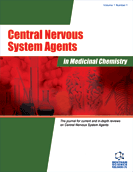
Full text loading...
The microbiota that inhabits the gastrointestinal tract has been linked to various gastrointestinal and non-gastrointestinal disorders. Scientists have been studying how the bacteria in our intestines have an effect on our brain and nervous system. This connection is called the “microbiota-gut-brain axis”. Given the capacity of probiotics, which are live non-pathogenic microorganisms, to reinstate the normal microbial population within the host and confer advantages, their potential impact has been subjected to scrutiny with regard to neurological and mental conditions. Material sourced for this review included peer-reviewed literature annotated in the PubMed, Web of Science, Scopus, and Google Scholar databases. The result has indicated the integration of probiotics into a child's diet to enhance the neuro-behavioral symptoms. Notwithstanding this, the current data set has been found to be insufficient and inconclusive. The potential utility of probiotics for the prevention or treatment of neurologic and mental disorders has become a subject of substantial interest.

Article metrics loading...

Full text loading...
References


Data & Media loading...

